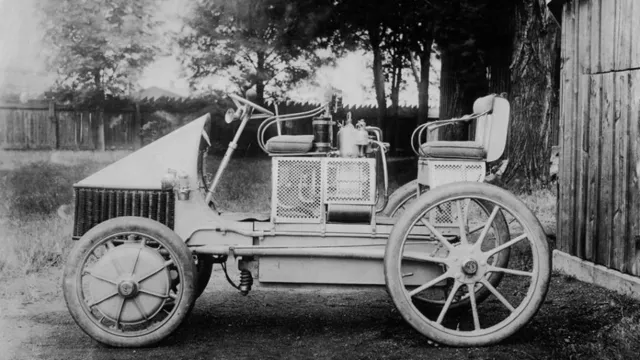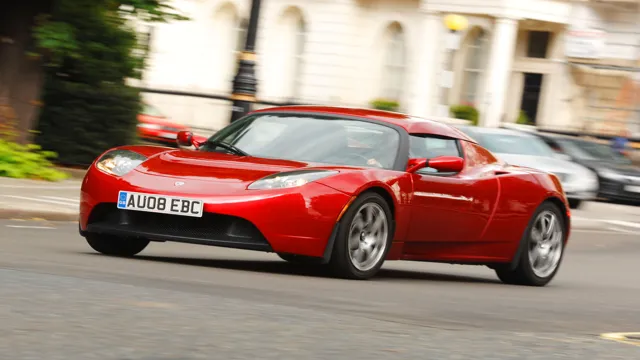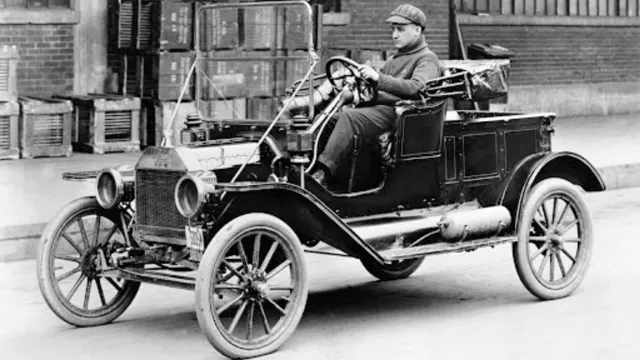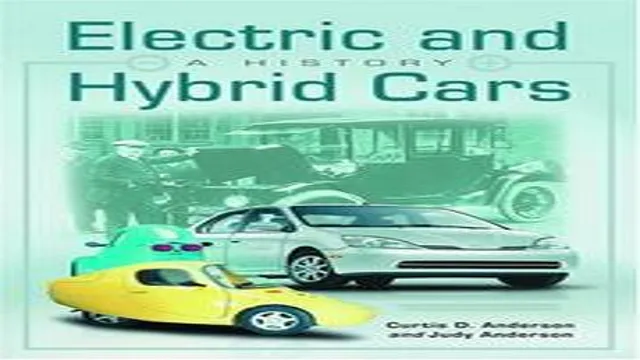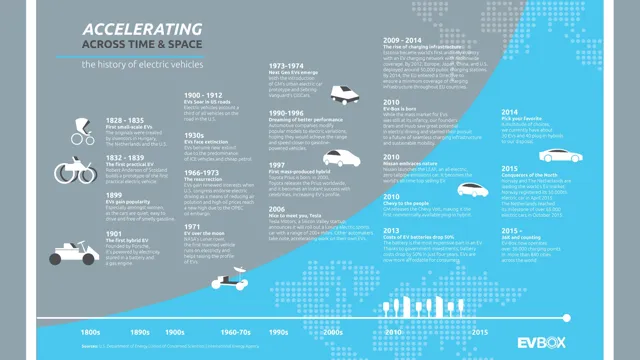The Past and Progression of Electric and Hybrid Cars: Tracing the Roots of Green Mobility
Electric and hybrid cars have become an increasingly popular topic over the last few years, but their history stretches further back than many of us realize. While electric vehicles are by no means a new idea, they have undergone a significant transformation since the first patent for an electric car was issued in 188 In this blog post, we will explore the brief history of electric and hybrid cars, from the early days of experimentation to the modern-day revival of electric cars and their promising future.
How have these vehicles evolved, and what significant advances have been made along the way? Let’s dive in and explore the intricate world of electric and hybrid cars.
The Early Years
The history of electric and hybrid cars dates back to the early 1800s when inventors like Ányos Jedlik and Thomas Davenport had begun experimenting with electric motors. While it took a while for the electric car to become a commercial product, hybrid cars made their debut in the early 1900s, with the Woods Dual Power and the Lohner-Porsche Mixte hybrid being some of the earliest models. However, it wasn’t until the late 1990s and early 2000s that electric and hybrid cars began to gain popularity, resulting in the launch of models like the Toyota Prius and the Tesla Roadster.
Today, electric and hybrid cars are considered the future of the automobile industry, with an increasing number of people opting for cleaner, greener vehicles that not only save money on fuel but also contribute towards a cleaner environment.
Development of Electric Cars
The development of electric cars can be traced back to the early years of automobiles. In the late 1800s, electric cars were popular in cities due to their low noise level and lack of emissions. However, the batteries available at the time limited their range and speed.
In the early 1900s, internal combustion engines became more popular due to their ability to travel longer distances and reach higher speeds. It wasn’t until the energy crisis in the 1970s that electric cars started gaining attention again. With advancements in battery technology, electric cars began to have longer ranges and faster speeds.
Today, electric cars are becoming more mainstream as society looks for ways to reduce carbon emissions and combat climate change. As more companies invest in electric car technology, we can expect to see continued advancements in the coming years.
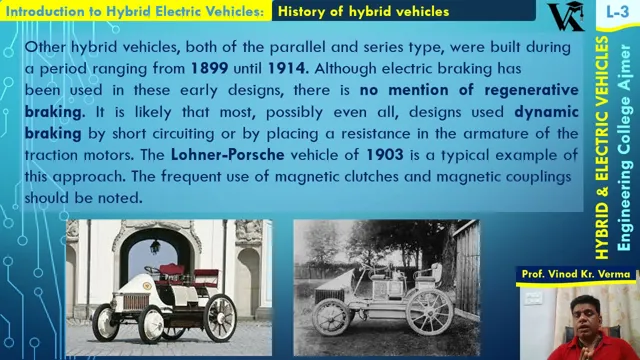
Hybrid Cars Enter the Scene
The early years of hybrid cars saw a slow but steady entry into the market. Back in the late 1990s and early 2000s, hybrid technology was still in its infancy and not many people were convinced that it was worth the investment. However, the Toyota Prius changed the game in 1997 when it became the world’s first mass-produced hybrid car.
It soon gained a following, with people drawn to its fuel efficiency and lower emissions. Then, in 2004, the Honda Civic Hybrid hit the scene, offering another option for those looking for a cleaner and more efficient ride. Despite concerns about the cost and reliability of the new technology, the early adopters of hybrid cars were determined to make a change for the better.
Today, hybrids are still going strong, with more and more models hitting the market each year. As people become more environmentally conscious, it’s clear that hybrids are here to stay.
Revolutionary Advances in the 21st Century
Electric and hybrid cars have undergone a revolutionary transformation in the 21st century. These vehicles, which were once a niche market, have become much more mainstream. The history of electric and hybrid cars dates back to the early 1990s when automakers first began to experiment with alternative power sources.
At the time, these vehicles were seen as a curiosity and were not taken seriously by the automotive industry. However, advances in technology have made electric and hybrid cars much more practical and affordable. Today, electric and hybrid cars are becoming more and more popular as people become increasingly concerned about the environment and the rising cost of fuel.
With the development of more efficient batteries and charging stations, electric and hybrid cars are poised to become a major force in the automotive industry in the years to come.
Tesla and the Rise of Electric Cars
Tesla, Electric Cars In recent years, there has been a significant rise in the popularity of electric cars, and Tesla has been at the forefront of this revolution. With visionary entrepreneur Elon Musk as its CEO, Tesla has introduced several innovative features in its cars that have captured the imagination of car enthusiasts worldwide. With over 7000 Superchargers, Tesla has made long-distance travel possible and more accessible than ever before.
Tesla cars also come with advanced autopilot features and a sleek design that has given electric cars a cool factor that was previously thought to be unattainable. Tesla’s advances in technology have pushed traditional automakers to invest more in electric cars, paving the way for a cleaner and more sustainable future. As fossil fuel reserves get depleted, Tesla’s vision of a world with electric cars, powered by renewable energy, has become more prominent, and it looks like we’re heading towards an era where electric cars will be the norm rather than the exception.
Major Automakers Join the Movement
As we enter the 21st century, major automakers are finally joining the movement to revolutionize the automotive industry. With advancements in technology and a growing concern for environmental sustainability, the industry is transforming at an unprecedented rate. From electric vehicles to autonomous driving features, major automakers such as Tesla, Ford, and General Motors are leading the way in implementing these innovative changes.
Not only are these advancements beneficial for the environment, but they also offer an enhanced driving experience for consumers. The keyword “automakers” is pivotal to the context of the paragraph, highlighting the significant role that these companies are playing in shaping the future of the industry. It’s exciting to see how far we’ve come in just a few short years and what incredible advancements we can expect to see in the near future.
Government Incentives and Policies
As we enter into the second decade of the 21st century, we are witnessing a revolutionary transformation in the way governments incentivize and implement policies to foster innovation and progress. Governments around the world are realizing the critical role they play in driving technological advancements and have put forth various incentives to support research and development in key sectors. In the United States, the government offers tax credits to businesses that invest in renewable energy and sustainable technologies, while in Europe, countries like Germany and France provide subsidies and grants for innovative startups.
Such initiatives not only encourage innovation but also help create new job opportunities and strengthen the economy. With the advent of advanced technologies such as AI and blockchain, governments are exploring new avenues to leverage these technologies to streamline their operations and provide better services to citizens. It is indeed an exciting time to be living in, and with the right incentives and policies in place, there is no limit to what we can achieve.
The Future of Electric and Hybrid Cars
Electric and hybrid cars have come a long way since their inception, revolutionizing the automotive industry through technological advancements and concerns for environmental sustainability. The history of electric and hybrid cars dates back to the early 19th century when the first electric vehicle was developed, followed by the first hybrid car in the early 20th century. However, it wasn’t until the 1990s that electric and hybrid cars made a noticeable impact on the market.
With the advancement of battery technology and increased focus on reducing carbon emissions, the future of electric and hybrid cars looks promising. In the next decade, we can expect to see more electric and hybrid cars on the road and improvements in driving range and charging infrastructure. The growing popularity of electric and hybrid cars is not only good for the environment but also for the economy as it creates new job opportunities and promotes innovation in the automotive industry.
Advancements in Battery Technology
Battery technology has come a long way over the years, making it possible for electric and hybrid cars to exist. However, there are still some limitations to the technology that have prevented it from becoming the norm. The future of electric and hybrid cars relies heavily on advancements in battery technology.
Many companies are working to develop new batteries that are more efficient, have longer lifetimes, and are less expensive. One approach that is gaining popularity is solid-state batteries, which use solid electrolytes instead of liquid ones. These batteries have the potential to store more energy, charge faster, and be safer than traditional lithium-ion batteries.
The use of new materials, such as silicon anodes and lithium-sulfur cathodes, also shows promise in improving battery efficiency and capacity. With continued research and development, it is likely that battery technology will continue to advance, making electric and hybrid cars more accessible and affordable for everyone.
Expansion of Charging Infrastructure
As electric and hybrid cars continue to rise in popularity, the need for an expanded charging infrastructure becomes increasingly vital for their success. Fortunately, the future is looking bright as more and more companies are investing in building charging stations that are convenient for drivers to use. The introduction of fast-charging technologies has also helped to make charging times shorter and more efficient.
Some experts believe that wireless charging will be the next big thing in charging infrastructure, eliminating the need for cords altogether. With an expanded charging infrastructure, electric and hybrid cars can become much more accessible for everyone, reducing our dependence on fossil fuels and ultimately resulting in a healthier planet. So, it’s exciting to imagine a future where you can easily find a charging station around your neighborhood, and the availability of parking spots with charging facilities will become an essential factor in car purchasing decisions.
Hence, electric car users can rest assured that the charging infrastructure is quickly catching up to the rapid expansion of electric cars on the road, making the future of eco-friendly driving more promising than ever before.
Conclusion: From Humble Beginnings to a Bright Future
In the history of electric and hybrid cars, we have seen a transformation of the automotive industry. From early experiments to mainstream production, electric and hybrid cars have come a long way. These vehicles offer a cleaner, quieter, and more sustainable option for transportation.
As advancements in technology continue to improve battery life and infrastructure for charging, we can expect to see even greater adoption of electric and hybrid cars in the future. So let’s charge up our batteries and hit the road towards a greener tomorrow!”
FAQs
What is the history of electric and hybrid cars?
Electric and hybrid cars were first introduced in the early 1900s, but they did not gain widespread popularity due to limitations in battery technology. However, with advances in technology, hybrid cars gained momentum in the 1990s and electric cars in the early 2000s.
Who invented the first electric car?
The first practical electric car was invented by Thomas Parker, a British inventor, in 1884.
When was the first hybrid car introduced?
The first mass-produced hybrid car, the Toyota Prius, was introduced in Japan in 1997 and later in the United States in 2000.
How efficient are electric and hybrid cars compared to traditional gasoline-powered cars?
Electric and hybrid cars are generally more efficient than traditional gasoline-powered cars as they use electricity and a combination of gasoline and electric power to reduce fuel consumption and emissions. However, their efficiency depends on factors such as driving conditions, battery life, and charging infrastructure.
What are some of the challenges facing electric and hybrid cars in terms of adoption?
One major challenge facing the adoption of electric and hybrid cars is the lack of charging infrastructure, which limits their range and accessibility. Another challenge is the higher cost of purchasing these vehicles compared to traditional gasoline-powered cars. Additionally, consumer perception and awareness about these vehicles can also affect their adoption.

